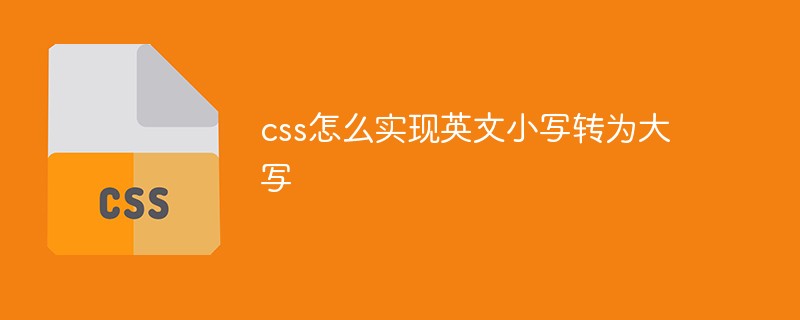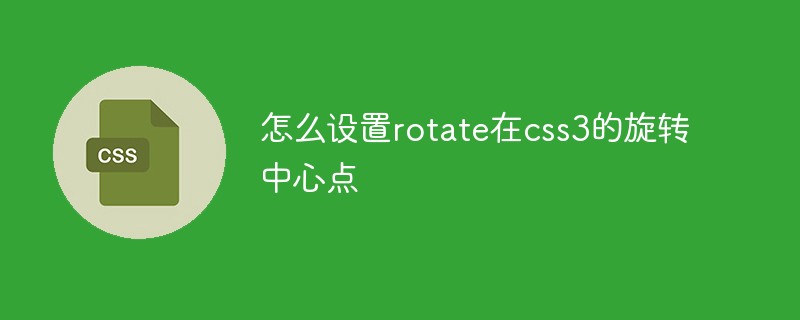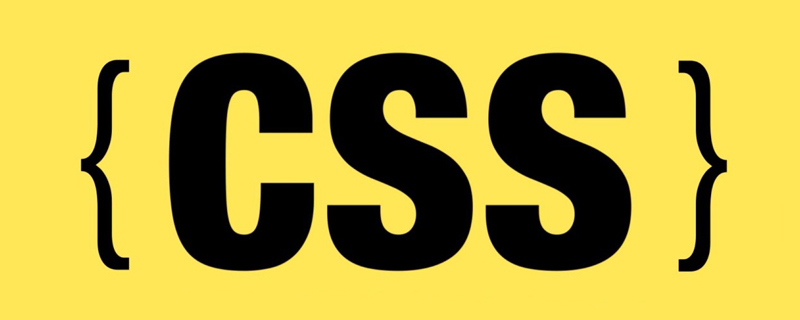 Web Front-end
Web Front-end CSS Tutorial
CSS Tutorial Detailed explanation of techniques for drawing triangular arrow patterns using CSS
Detailed explanation of techniques for drawing triangular arrow patterns using CSSI want to modify this website recently, and I want to put a prompt box on it. This is easy enough, but I want the tooltip to have a triangular arrow. However, it is almost a disaster when I think about the need to use pictures and prepare countless arrows of various colors and directions. Fortunately, Darren Waddell, the core developer of MooTools, told me about a great technique: drawing triangular arrows with CSS. Using pure CSS, you only need very little code to create triangular arrows that are compatible with various browsers!
CSS code
/* create an arrow that points up */
p.arrow-up {
width: 0;
height: 0;
border-left: 5px solid transparent; /* left arrow slant */
border-right: 5px solid transparent; /* right arrow slant */
border-bottom: 5px solid #2f2f2f; /* bottom, add background color here */
font-size: 0;
line-height: 0;
}
/* create an arrow that points down */
p.arrow-down {
width: 0;
height: 0;
border-left: 5px solid transparent;
border-right: 5px solid transparent;
border-top: 5px solid #2f2f2f;
font-size: 0;
line-height: 0;
}
/* create an arrow that points left */
p.arrow-left {
width: 0;
height: 0;
border-bottom: 5px solid transparent; /* left arrow slant */
border-top: 5px solid transparent; /* right arrow slant */
border-right: 5px solid #2f2f2f; /* bottom, add background color here */
font-size: 0;
line-height: 0;
}
/* create an arrow that points right */
p.arrow-rightright {
width: 0;
height: 0;
border-bottom: 5px solid transparent; /* left arrow slant */
border-top: 5px solid transparent; /* right arrow slant */
border-left: 5px solid #2f2f2f; /* bottom, add background color here */
font-size: 0;
line-height: 0;
}
The key to drawing these triangles is that you want the two sides in the direction of the arrow to have Very thick borders. The side facing away from the arrow also has the same thick border, and the color of this side is the color of your triangle. The thicker the border, the larger the triangle. This way you can draw arrows of various colors, sizes, and orientations. The best part is, you only need a few lines of CSS code to achieve this effect.
Use :before and :after to draw CSS triangles
The above CSS examples use real page elements to draw, but sometimes the real elements are also It is used, but you can't go on it and operate it directly. What should I do? Pure CSS triangles can actually be drawn using pseudo-elements. Here's how to draw it:
p.tooltip {
/* tooltip content styling in here; nothing to do with arrows */
}
/* shared with before and after */
p.tooltip:before, p.tooltip:after {
content: ' ';
height: 0;
position: absolute;
width: 0;
border: 10px solid transparent; /* arrow size */
}
/* these arrows will point up */
/* top-stacked, smaller arrow */
p.tooltip:before {
border-bottom-color: #fff; /* arrow color */
/* positioning */
position: absolute;
top: -19px;
left: 255px;
z-index: 2;
}
/* arrow which acts as a background shadow */
p.tooltip:after {
border-bottom-color: #333; /* arrow color */
/* positioning */
position: absolute;
top: -24px;
left: 255px;
z-index: 1;
}
The color of the border on the side facing away from the arrow is the color of the triangle arrow. You don't need to use both :before and :after pseudo-elements to draw this arrow - one is enough. And the other one, you can use it as a background shadow or background edge for the previous one.
I really should have known about this technology earlier! I believe this simple and hassle-free technology will come in handy when making interface improvements in the future.
The above is the entire content of this article. I hope it will be helpful to everyone's learning. I also hope that everyone will support the PHP Chinese website.
The above is the detailed content of Detailed explanation of techniques for drawing triangular arrow patterns using CSS. For more information, please follow other related articles on the PHP Chinese website!
 css ul标签怎么去掉圆点Apr 25, 2022 pm 05:55 PM
css ul标签怎么去掉圆点Apr 25, 2022 pm 05:55 PM在css中,可用list-style-type属性来去掉ul的圆点标记,语法为“ul{list-style-type:none}”;list-style-type属性可设置列表项标记的类型,当值为“none”可不定义标记,也可去除已有标记。
 css与xml的区别是什么Apr 24, 2022 am 11:21 AM
css与xml的区别是什么Apr 24, 2022 am 11:21 AM区别是:css是层叠样式表单,是将样式信息与网页内容分离的一种标记语言,主要用来设计网页的样式,还可以对网页各元素进行格式化;xml是可扩展标记语言,是一种数据存储语言,用于使用简单的标记描述数据,将文档分成许多部件并对这些部件加以标识。
 css3怎么实现鼠标隐藏效果Apr 27, 2022 pm 05:20 PM
css3怎么实现鼠标隐藏效果Apr 27, 2022 pm 05:20 PM在css中,可以利用cursor属性实现鼠标隐藏效果,该属性用于定义鼠标指针放在一个元素边界范围内时所用的光标形状,当属性值设置为none时,就可以实现鼠标隐藏效果,语法为“元素{cursor:none}”。
 rtl在css是什么意思Apr 24, 2022 am 11:07 AM
rtl在css是什么意思Apr 24, 2022 am 11:07 AM在css中,rtl是“right-to-left”的缩写,是从右往左的意思,指的是内联内容从右往左依次排布,是direction属性的一个属性值;该属性规定了文本的方向和书写方向,语法为“元素{direction:rtl}”。
 css怎么实现英文小写转为大写Apr 25, 2022 pm 06:35 PM
css怎么实现英文小写转为大写Apr 25, 2022 pm 06:35 PM转换方法:1、给英文元素添加“text-transform: uppercase;”样式,可将所有的英文字母都变成大写;2、给英文元素添加“text-transform:capitalize;”样式,可将英文文本中每个单词的首字母变为大写。
 css怎么设置i不是斜体Apr 20, 2022 am 10:36 AM
css怎么设置i不是斜体Apr 20, 2022 am 10:36 AM在css中,可以利用“font-style”属性设置i元素不是斜体样式,该属性用于指定文本的字体样式,当属性值设置为“normal”时,会显示元素的标准字体样式,语法为“i元素{font-style:normal}”。
 怎么设置rotate在css3的旋转中心点Apr 24, 2022 am 10:50 AM
怎么设置rotate在css3的旋转中心点Apr 24, 2022 am 10:50 AM在css3中,可以用“transform-origin”属性设置rotate的旋转中心点,该属性可更改转换元素的位置,第一个参数设置x轴的旋转位置,第二个参数设置y轴旋转位置,语法为“transform-origin:x轴位置 y轴位置”。


Hot AI Tools

Undresser.AI Undress
AI-powered app for creating realistic nude photos

AI Clothes Remover
Online AI tool for removing clothes from photos.

Undress AI Tool
Undress images for free

Clothoff.io
AI clothes remover

AI Hentai Generator
Generate AI Hentai for free.

Hot Article

Hot Tools

SublimeText3 Mac version
God-level code editing software (SublimeText3)

SAP NetWeaver Server Adapter for Eclipse
Integrate Eclipse with SAP NetWeaver application server.

Atom editor mac version download
The most popular open source editor

mPDF
mPDF is a PHP library that can generate PDF files from UTF-8 encoded HTML. The original author, Ian Back, wrote mPDF to output PDF files "on the fly" from his website and handle different languages. It is slower than original scripts like HTML2FPDF and produces larger files when using Unicode fonts, but supports CSS styles etc. and has a lot of enhancements. Supports almost all languages, including RTL (Arabic and Hebrew) and CJK (Chinese, Japanese and Korean). Supports nested block-level elements (such as P, DIV),

SecLists
SecLists is the ultimate security tester's companion. It is a collection of various types of lists that are frequently used during security assessments, all in one place. SecLists helps make security testing more efficient and productive by conveniently providing all the lists a security tester might need. List types include usernames, passwords, URLs, fuzzing payloads, sensitive data patterns, web shells, and more. The tester can simply pull this repository onto a new test machine and he will have access to every type of list he needs.






